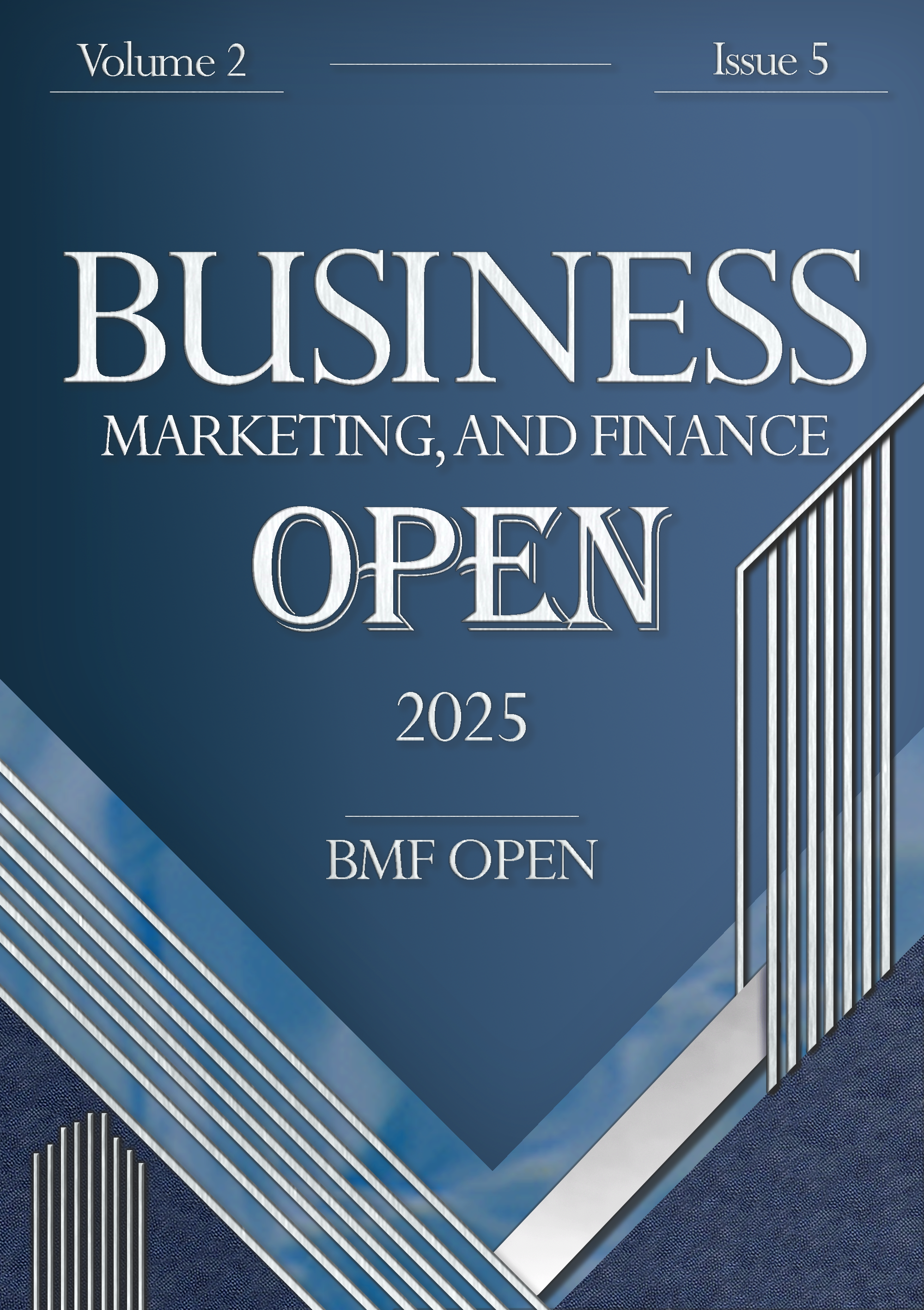Application of Gradient Boosting Algorithm in Predicting Relative Pricing of Initial Public Offerings: A Case Study of the Iranian Stock Exchange
Keywords:
Relative pricing, initial public offering (IPO), gradient boosting algorithm, machine learning, Tehran Stock Exchange, Iran Fara Bourse, combined model, stock price predictionAbstract
This study aimed to develop a model based on the Gradient Boosting algorithm to predict the relative pricing of initial public offerings (IPOs) in the Iranian stock market. Another objective of the research was to identify the factors influencing the relative pricing of IPO stocks. This study was conducted using data from 42 companies listed on the Tehran Stock Exchange and 121 companies listed on the Iran Fara Bourse over the period from 2013 to 2023. The three main dependent variables examined included the market-to-book value ratio, the enterprise value-to-asset ratio, and the enterprise value-to-sales ratio. The independent and control variables were extracted based on financial theories and previous studies, and were utilized in gradient boosting models and subsequently in a combined machine learning model based on gradient boosting algorithms. The combined gradient boosting model demonstrated a high capability in predicting the relative pricing variables. Internal financial factors (weighted average cost of capital, return on assets, financial leverage) and performance-related variables (operating profit margin, earnings per share) had the greatest impact. Firm size, firm age, and cash flow ratio were among the influential control variables. The model was able to identify interaction effects and nonlinear relationships among variables. The application of the combined gradient boosting method for the first time in Iran’s capital market to price initial public offerings constitutes the primary innovation of this study. The results showed that the combined model had a lower prediction error compared to standalone gradient boosting models. This innovative approach, applied for the first time in the Iranian capital market, demonstrated high efficiency in dealing with market complexities and can assist investors, underwriters, and regulatory institutions in making better decisions.
References
C. M. Aldana and F. Trigos, "A transdisciplinary engineering framework for analysing initial public offerings' financial behaviour," International Journal of Agile Systems and Management, vol. 18, no. 1, pp. 112-132, 2025, doi: 10.1504/IJASM.2025.144166.
A. Habib and M. M. Hasan, "Corporate life cycle research in accounting, finance and corporate governance: A survey, and directions for future research," International Review of Financial Analysis, vol. 61, no. 1, pp. 188-201, 2019, doi: 10.1016/j.irfa.2018.12.004.
G. Airlangga and A. Liu, "A Hybrid Gradient Boosting and Neural Network Model for Predicting Urban Happiness: Integrating Ensemble Learning with Deep Representation for Enhanced Accuracy," Machine Learning and Knowledge Extraction, vol. 7, no. 1, pp. 1-23, 2025, doi: 10.3390/make7010004.
A. Rasheed, M. Khalid Sohail, S. U. Din, and M. Ijaz, "How Do Investment Banks Price Initial Public Offerings? An Empirical Analysis of Emerging Market," International Journal of Financial Studies, vol. 6, no. 3, pp. 77-101, 2018, doi: 10.3390/ijfs6030077.
P. d. Andrés, D. Arroyo, R. Correia, and A. Rezola, "Challenges of the market for initial coin offerings," International Review of Financial Analysis, vol. 79, no. 1, p. 101966, 2022, doi: 10.1016/j.irfa.2021.101966.
Y. K. Dwivedi et al., "Setting the future of digital and social media marketing research: Perspectives and research propositions," International Journal of Information Management, vol. 59, no. 1, p. 102168, 2021, doi: 10.1016/j.ijinfomgt.2020.102168.
T. Chemmanur, "The Pricing of Initial Public Offerings: A Dynamic Model With Information Production," The Journal of Finance, vol. 48, no. 1, pp. 285-304, 1993, doi: 10.1111/j.1540-6261.1993.tb04710.x.
N. Crain, P. Robert, and S. Raji, "Uncertainty prospectus content and the pricing of initial public offerings," Journal of Empirical Finance, vol. 64, no. 2, pp. 1-23, 2021, doi: 10.1016/j.jempfin.2021.08.007.
A. A. Daryaei, P. Azizi, and Y. Fattahi, "Conservatism and Initial Public Offerings (IPOs) Underpricing: An Audit Quality Perspective," Iranian Journal of Finance, vol. 6, no. 4, pp. 125-159, 2022, doi: 10.30699/ijf.2022.284931.1230.
W. L. Megginson and J. M. Netter, "From state to market: A survey of empirical studies on privatization," ed, 1999.
D. Dalton, T. Certo, and C. Daily, "Initial Public Offerings as a Web of Conflicts of Interest: An Empirical Assessment," Business Ethics Quarterly, vol. 13, no. 3, pp. 289-314, 2023, doi: 10.2307/3857783.
V. Nikpey Pesyan, A. Reza Zadeh, H. Ahmadi Nezhad, and S. Ahmad Vand, "Investigating the Causal Relationship Between Stocks' Initial Public Offerings and Macroeconomic Variables," Journal of Asset Management and Financing, vol. 11, no. 2, pp. 35-52, 2023, doi: 10.22108/amf.2023.136359.1779.
S. Füllbrunn, T. Neugebauer, and A. Nicklisch, "Underpricing of initial public offerings in experimental asset markets," Experimental Economics, vol. 23, no. 4, pp. 1002-1029, 2020, doi: 10.1007/s10683-019-09683-4.
L. Bateni and F. Asghari, "Study of Factors Affecting the Initial Public Offering (IPO) Price of the Shares on the Tehran Stock Exchange," Research in World Economy, vol. 5, no. 2, pp. 68-79, 2014, doi: 10.5430/rwe.v5n2p68.
M. H. Haratameh and B. Ebrahimi, "Investigating the impact of initial public offerings (IPOs) on companies' financial performance," New Research in Performance Evaluation, vol. 2, no. 4, pp. 240-252, 2023, doi: 10.22105/mrpe.2024.451424.1096.
T. Kazemi and P. Piri, "Predicting fraud schemes in financial reporting using a multi-class machine learning approach," Journal of Experimental Accounting Research, vol. 12, no. 4, pp. 255-280, 2022, doi: 10.22051/jera.2022.41290.3040.
A. Abbasian, K. Shahraki, S. Fallahpour, and A. Namaki, "A novel approach to financial distress prediction using financial network-based information and a combined gradient boosting decision tree method," Asset Management and Financing, vol. 11, no. 3, pp. 113-140, 2023, doi: 10.22108/amf.2023.138909.1818.
B. Baba and G. Sevil, "Predicting IPO initial returns using random forest," Borsa Istanbul Review, vol. 20, no. 1, pp. 13-23, 2020, doi: 10.1016/j.bir.2019.08.001.
S. M. Khatami, Z. Gholamreza, M. Leyalestani, and M. Minoei, "Investigating the dependency structure of the Iranian stock market and MENA region countries," Financial Economics, vol. 16, no. 61, pp. 273-310, 2022, doi: 10.30495/fed.2023.698852.
M. Mehrabadi, A. Najafizadeh, M. Zanjirdar, and P. Ashtiani, "Investigating the impact of market structure and asymmetric information on the performance of companies active in the Tehran Stock Exchange in a dynamic model," Financial Economics, vol. 16, no. 60, pp. 93-120, 2022, doi: 10.30495/fed.2022.697606.
R. Nabi, S. Saeed, and H. Harron, "A Novel Approach for Stock Price Prediction Using Gradient Boosting Machine with Feature Engineering (GBM-wFE)," KJAR, vol. 5, no. 1, pp. 28-48, 2020, doi: 10.24017/science.2020.1.3.
S. S. Roy, R. Chopra, K. C. Lee, C. Spampinato, and B. Mohammadi-ivatlood, "Random forest, gradient boosted machines and deep neural network for stock price forecasting: a comparative analysis on South Korean companies," International Journal of Ad Hoc and Ubiquitous Computing, vol. 33, no. 1, pp. 62-71, 2020, doi: 10.1504/IJAHUC.2020.104715.
G. Mitrentsis and H. Lens, "An interpretable probabilistic model for short-term solar power forecasting using natural gradient boosting," Applied Energy, vol. 309, no. 1, p. 118473, 2021, doi: 10.1016/j.apenergy.2021.118473.
M. Saeidi Aghdam, A. Sadeghi, A. Bahiraei, and S. Haji Asghari, "Presenting a stock price prediction model using deep learning algorithms and its application in pricing Islamic bank stocks," Journal of Islamic Economics and Banking, vol. 11, no. 41, pp. 117-134, 2022.
P. Geertsema and H. Lu, "Relative Valuation with Machine Learning," Journal of Accounting Research, vol. 61, no. 1, pp. 329-376, 2022, doi: 10.1111/1475-679X.12464.
K. Nakagawa and K. Yoshida, "Time-series gradient boosting tree for stock price prediction," International Journal of Data Mining, Modelling and Management, vol. 14, no. 2, pp. 110-125, 2022, doi: 10.1504/IJDMMM.2022.123357.
S. Li, "Estimating Stock Market Prices with Histogrambased Gradient Boosting Regressor: A Case Study on Alphabet Inc," International Journal of Advanced Computer Science and Applications, vol. 15, no. 5, pp. 532-544, 2023, doi: 10.14569/IJACSA.2024.0150553.
V. Gupta and E. Kumar, "H3O-LGBM: hybrid Harris hawk optimization based light gradient boosting machine model for real-time trading," Springer Nature, vol. 56, no. 1, pp. 8697-8720, 2023, doi: 10.1007/s10462-022-10323-0.
Z. Huma and A. Nishat, "Optimizing Stock Price Prediction with LightGBM and Engineered Features," Pioneer Research Journal of Computing Science, vol. 1, no. 1, pp. 59-67, 2024.
F. Ghallabi, B. Souissi, A. M. Du, and S. Ali, "ESG stock markets and clean energy prices prediction: Insights from advanced machine learning," International Review of Financial Analysis, vol. 97, no. 1, p. 103889, 2025, doi: 10.1016/j.irfa.2024.103889.
Downloads
Published
Submitted
Revised
Accepted
Issue
Section
License
Copyright (c) 2025 Fatemeh Malmir (Author); Farshid Kheirollahi; Hossein Yarahmadi , Farid Sefaty (Author)

This work is licensed under a Creative Commons Attribution-NonCommercial 4.0 International License.







